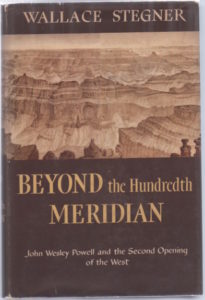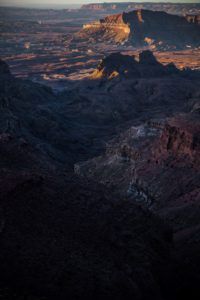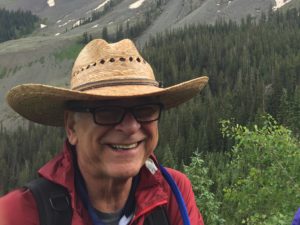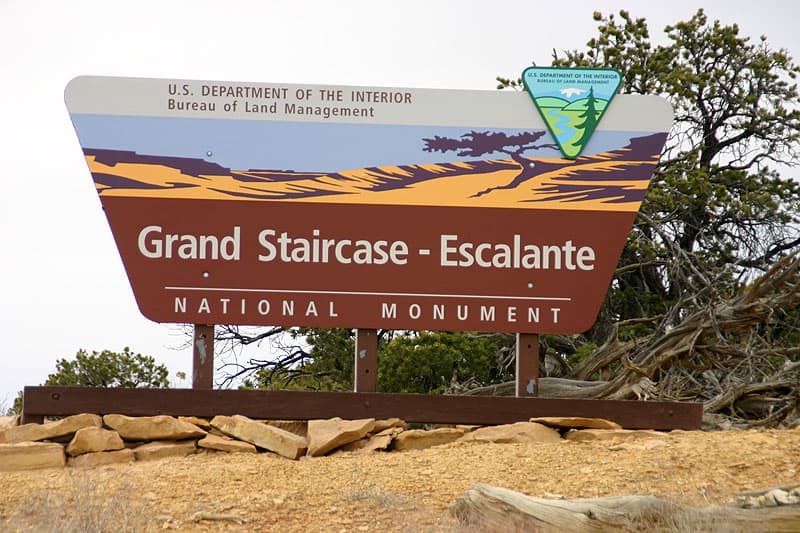 When I was a teenager, a book by Wallace Stegner called Beyond the Hundredth Meridian found me and changed my life.
When I was a teenager, a book by Wallace Stegner called Beyond the Hundredth Meridian found me and changed my life.
Because of Stegner’s understanding, love for the West and masterful writing, another region called me from the small eastern New Mexico town I called home: the high desert country of southwestern Utah.
The names jumped from the pages: Kaiparowits Plateau, Vermillion Cliffs, Aquarius Plateau, Waterpocket Fold and Kodachrome Basin. A deep-seated desire rose up from an ancient place in the “me” older than me, a desire to explore was fired-up at the wild geography these exotic monikers evoked.
After the descriptive words written in this book came alive in my imagination, I wanted to know the places real-time and in a personal way.
It took years and at least two good hiking companions to turn those dreams into reality.
While laid off from temporary employment by the agency known as the BLM (Bureau of Land Management), I undertook hiking and backpacking trips that eventually led me to what would become Grand Staircase-Escalante National Monument.
That same agency is now re-deciding the fate of these special places, as this land remains under their jurisdiction. This comes after President Trump– claiming authority under the Antiquities Act– reduced the area by 862,000 acres from its original 1.7 million.
If I could, I would reverse President Trump’s proclamation to reduce Grand Staircase-Escalante National Monument.
When President Clinton proclaimed the Grand Staircase-Escalante region a national monument in 1996, it was for several good reasons. One was to stop a Dutch mining company’s proposed excavation of the Smoky Hollow coal mine, near the tiny town of Big Water.
Then, the mine’s estimated potential of 72 million tons was economically unfeasible for extraction due to its remote location. Now, with the clear and present threat of climate change, coal is arguably not a sustainable or desirable fuel source.
Despite myriad scientific facts that validate climate change, President Trump has decreased the size of the monument partly to allow coal extraction (plus oil and gas) in what were previously protected areas. Interestingly, the Smoky Hollow coal mine that was proposed twenty-five years ago is once again excluded from the national monument boundary.

Grand Staircase Escalante, photo by Patrick Hendry
It appears that most of these lands in southeast Utah– that were removed from protection by Trump– now allow resource exploration and extraction, including oil and gas, in addition to coal.
Trump listened only to some strident local voices, telling how Utahns wanted control of “their” public land and describing how their economy suffered while these lands were protected under monument status.
However, studies by research firm Headwaters Economics says this:
“Overall, the updated analysis by Headwaters Economics again found no evidence that designating these national monuments prevented economic growth.”
This land is clearly rich in natural resources but serves us better as a place for “re-creation” through reconnection with the land. The stories my feet could tell… having walked over much of this challenging, fascinating and mysterious desert landscape.

Everett Reuss, prior to his 1934 vanishing.
The Grand Staircase-Escalante National Monument contains many mysteries, such as the tale of the artist, poet, and adventurer Everett Reuss, who disappeared in 1934. He walked alone into the vastly beautiful and alluring Escalante River area– and never returned.
Even stronger than the compulsion that drew me to this wild place is the fervent wish that Trump’s decision to reduce the size of the monument is soon overturned in the courts. Several lawsuits have been filed, challenging the legality of using the Antiquities Act to vastly reduce the monument’s size and protected status.
In the meantime, if you care about public lands, join me in commenting on the quickly compiled and inadequate plans the BLM has produced.
Time is running out as the November 30 deadline fast approaches.
Go to https://goo.gl/EHvhbc and click “Documents and Reports” in the left column. Download and read the main items:
1) Analysis of Management Situation,
2) GSENM- KEPA Executive Summary-508
3) GSENM-KEPA RMPs-EIS Vol 1-508
4) GSENM-KEPA RMPs-EIS Vol 2-508 (to the right of which is “Comment on Document”)
Note that you’ll need to include a reference to a specific page or section of the Draft EIS/Draft RMP in your comment. It’s arguably tedious, but so very important.
 Contributing writer Bill Kight retired from the 2.3 million-acre White River National Forest as the public affairs officer in 2016. Previously, for 30 years, Bill worked as an archaeologist and heritage resource manager among the Navajo, Zuni, Acoma and Ute Indians of New Mexico, Colorado, and Utah. Twenty years of that time was spent consulting with the Southern Ute, Ute Mountain Ute and Uintah-Ouray Ute Indian Tribes on the Ute Trail Project. In his 38 years of government public service, Bill was a ranger, community liaison, firefighter and Public Information Officer on an all-risk Incident Management Team. Bill is now the Executive Director of the Glenwood Springs Historical Society and Frontier Museum.
Contributing writer Bill Kight retired from the 2.3 million-acre White River National Forest as the public affairs officer in 2016. Previously, for 30 years, Bill worked as an archaeologist and heritage resource manager among the Navajo, Zuni, Acoma and Ute Indians of New Mexico, Colorado, and Utah. Twenty years of that time was spent consulting with the Southern Ute, Ute Mountain Ute and Uintah-Ouray Ute Indian Tribes on the Ute Trail Project. In his 38 years of government public service, Bill was a ranger, community liaison, firefighter and Public Information Officer on an all-risk Incident Management Team. Bill is now the Executive Director of the Glenwood Springs Historical Society and Frontier Museum.

